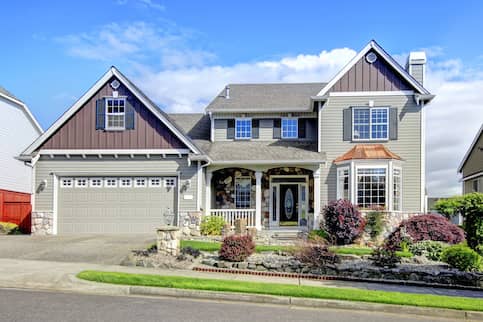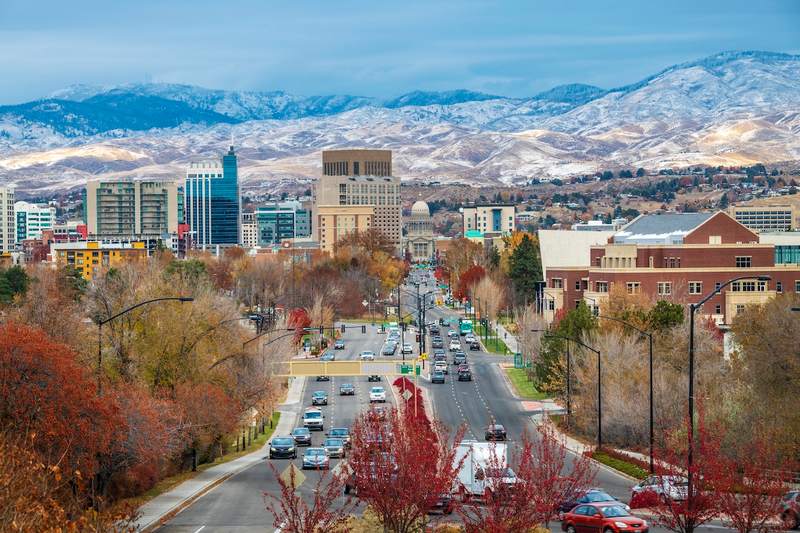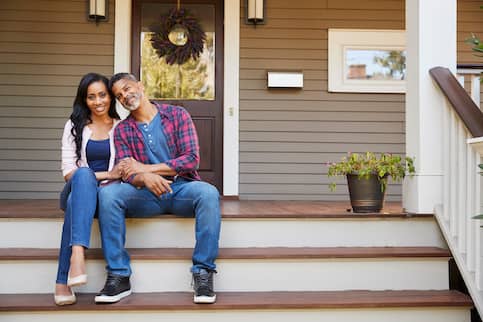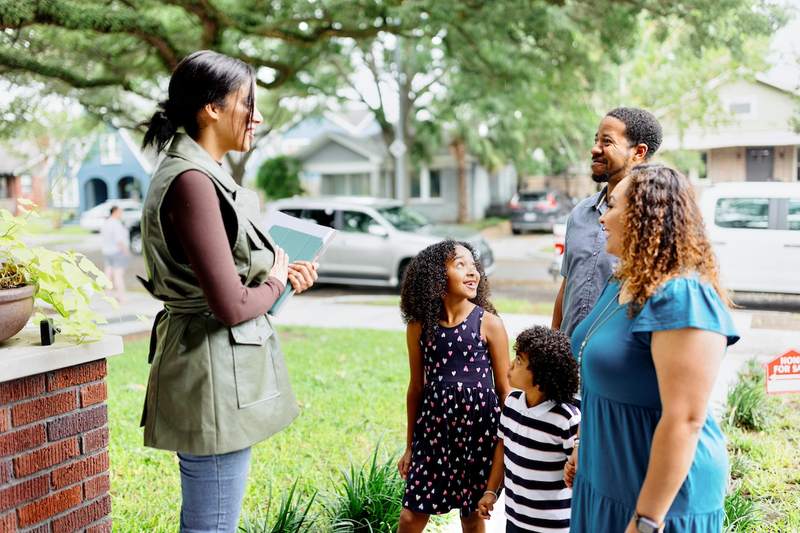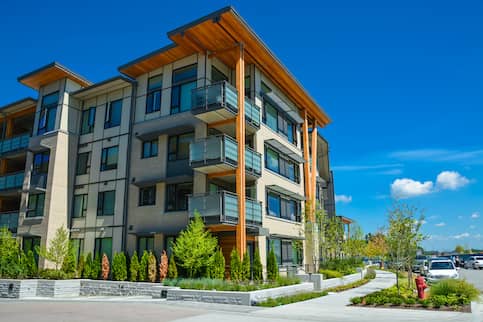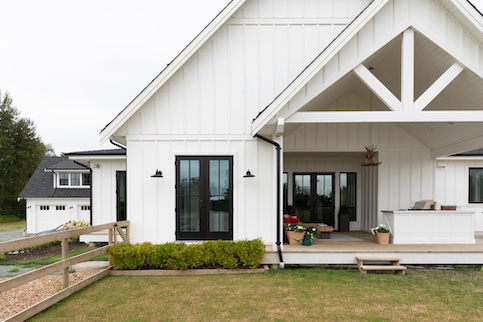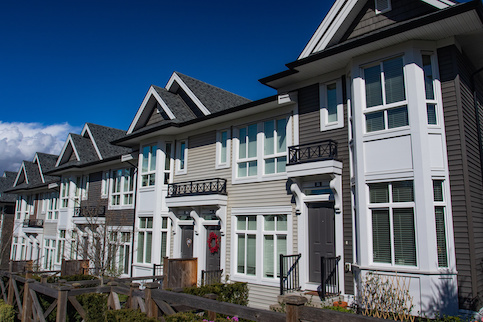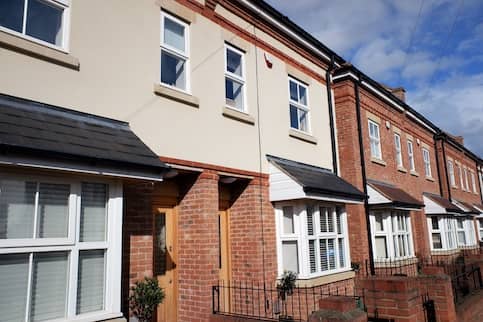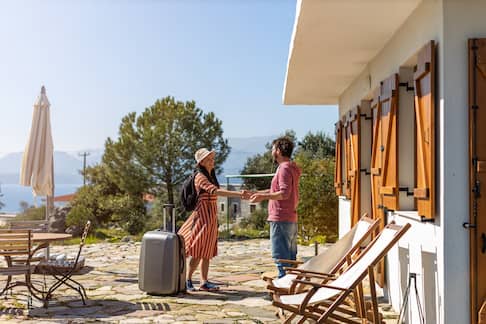If you’re looking to finance a rental property with no intention of living within the property, then a non-owner-occupied mortgage could be the solution. Let’s take a closer look at this financing opportunity for potential rental properties. As we do, remember to take advantage of our free guide to purchasing an investment property.
Non-Owner-Occupied Loan, Defined
A non-owner-occupied mortgage is a type of mortgage designed for residential properties with one to four units. The twist is that the borrower is not planning to live in the property.
Essentially, if you’re not planning to use the property as your primary residence, you’ll need to seek out a non-owner-occupied mortgage. But if you want to finance a large apartment building with more than four units, then this type of mortgage will not work for you.
What’s Your Goal?
Buy A Home
Discover mortgage options that fit your unique financial needs.

Refinance
Refinance your mortgage to have more money for what matters.
Tap Into Equity
Use your home’s equity and unlock cash to achieve your goals.
How Do Non-Owner-Occupied Mortgages Work?
When a lender is considering a borrower’s application, the distinction between a non-owner-occupied and an owner-occupied mortgage is important. Mortgage lenders use this property classification, among many other things, to determine the interest rate for the loan.
If a borrower is looking for a non-owner-occupied mortgage, the lender will likely charge a higher interest rate than for an owner-occupied property mortgage. This is the case because non-owner-occupied properties have a higher risk of default. With that, the lender compensates for this increased risk with a higher interest rate.
Beyond the interest rate, a lender may also require a larger down payment for a non-owner-occupied mortgage. The increased down payment is another way to protect from the higher risk associated with non-owner-occupied mortgages.
How Much Of A Down Payment Do You Need?
In general, all investment properties will require a larger down payment than an owner-occupied mortgage. With that, if you are looking for non-owner-occupied financing, you’ll likely be faced with a high down payment requirement.
The exact percentage will depend on the individual lender, but you can expect a down payment requirement somewhere between 20% – 30%.
Why Is The Interest Rate Higher?
When an investor obtains a real estate property with a non-owner-occupied mortgage, there is a higher risk of default. With that, the lender protects itself by charging a higher interest rate.
Of course, the borrower’s credit score and down payment type will also affect the interest rate. If a borrower has a high credit score and large down payment available, they may receive a lower interest rate. Additionally, the type of property and the number of residences will affect the interest rate.
Ready To Become A Homeowner?
Get matched with a lender that can help you find the right mortgage.
Be Aware Of Occupancy Fraud
As you start to explore your non-owner-occupancy mortgage options, you’ll quickly find that the costs are significantly higher than an owner-occupied mortgage.
Unfortunately, this can lead some investors into occupancy fraud to cut costs. Instead of being truthful on the application, some investors might be tempted to say that they will live in the property even if they have no intention to do so.
This is called occupancy fraud, but it is only fraud if you knowingly misrepresent your intentions on the mortgage application. If your circumstances change after you’ve closed on the mortgage, then you’re in the clear.
For example, let’s say you close on a home you intend to live in today. But tomorrow your employer transfers you to another state. At that point, you could move and rent out the property without committing fraud. The important thing is to be completely honest when completing your mortgage application.
Occupancy fraud can result in serious repercussions. An investor who commits occupancy fraud could be forced to repay the entire mortgage immediately or be prosecuted for bank fraud.
Take The First Step To Buying A Home
Find a lender that will work with your unique financial situation.
Using Non-Owner-Occupied Loans For Renovations
A non-owner-occupied renovation loan is a little bit different from a traditional non-owner-occupied loan. Instead of simply using the funds to purchase a property, you can use the funds from a non-owner-occupied renovation loan to purchase the property and cover renovation costs.
As a real estate investor, this may sound like a great opportunity. But there are a few considerations to keep in mind:
- Renovations must be a permanent part of the property.
- Renovations must increase the home’s property and market value.
- These loans are limited to four financed properties per borrower.
Every lender will have slightly different requirements for a non-owner-occupied renovation loan. Be clear about the details with an individual lender before moving forward.
Non-Owner-Occupied Mortgage FAQs
Let’s jump into some of the most commonly asked questions regarding non-owner-occupied mortgages.
The Bottom Line
If you want to secure an investment property, then a non-owner-occupied mortgage could be the way to go. As you build your real estate investment portfolio, consider working with licensed professionals who can help you make the most of your investments.
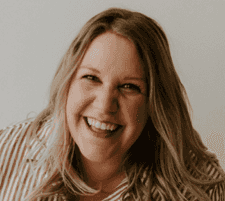
Miranda Crace
Miranda Crace is a Staff Writer for Rocket Companies, bringing a wealth of knowledge about mortgages, personal finance, real estate and personal loans for over 10 years. Miranda is dedicated to advancing financial literacy and empowering individuals to achieve their financial and homeownership goals. She graduated from Wayne State University, where she studied PR writing, film production and film editing. In her spare time, Miranda enjoys traveling, actively engages in the entrepreneurial community, and savors a perfectly brewed cup of coffee.
